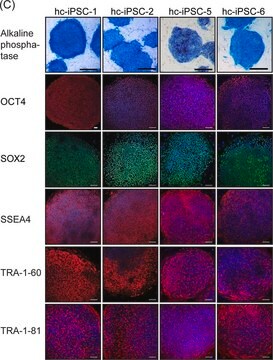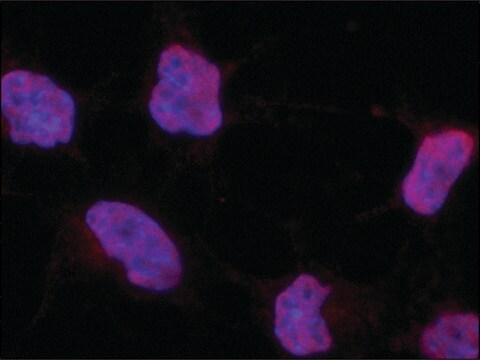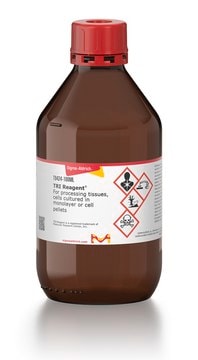MAB4401
Anti-Oct-4 Antibody, clone 10H11.2
clone 10H11.2, Chemicon®, from mouse
Sinonimo/i:
Octamer-binding transcription factor 3, POU class 5 homeobox 1, POU domain class 5, transcription factor 1, POU domain, class 5, transcription factor 1, POU-type homeodomain-containing DNA-binding protein, octamer-binding transcription factor-3
About This Item
Prodotti consigliati
Origine biologica
mouse
Forma dell’anticorpo
purified antibody
Clone
10H11.2, monoclonal
Reattività contro le specie
human
Produttore/marchio commerciale
Chemicon®
tecniche
ELISA: suitable
flow cytometry: suitable
immunocytochemistry: suitable
western blot: suitable
input
sample type induced pluripotent stem cell(s)
sample type: human embryonic stem cell(s)
Isotipo
IgG1
N° accesso NCBI
N° accesso UniProt
Condizioni di spedizione
wet ice
modifica post-traduzionali bersaglio
unmodified
Informazioni sul gene
human ... POU5F1(5460)
Descrizione generale
Specificità
Applicazioni
ELISA: A previous lot of this antibody was used in ELISA.
Immunocytochemistry: A previous lot of this antibody was used in IC. H9 cells in culture on a mouse embronic fibroblast feeder layer were labeled by a standard indirect IF protocol. Oct-4 labelling in green, DAPI in blue, & SSEA-3 (MAB4303 in red).
Optimal working dilutions must be determined by the end user.
Qualità
Western Blotting: 1:500 dilution of this antibody detected Oct-4 on 10 µg of mouse P1 brain lysates
Descrizione del bersaglio
Stato fisico
Risultati analitici
Human embryonic stem cell lysate.
Altre note
Note legali
Raccomandato
Codice della classe di stoccaggio
12 - Non Combustible Liquids
Classe di pericolosità dell'acqua (WGK)
WGK 2
Punto d’infiammabilità (°C)
Not applicable
Certificati d'analisi (COA)
Cerca il Certificati d'analisi (COA) digitando il numero di lotto/batch corrispondente. I numeri di lotto o di batch sono stampati sull'etichetta dei prodotti dopo la parola ‘Lotto’ o ‘Batch’.
Possiedi già questo prodotto?
I documenti relativi ai prodotti acquistati recentemente sono disponibili nell’Archivio dei documenti.
Articoli
Skip weekend feedings. Defined serum-free and feeder-free expansion media for human pluripotent stem cells (ES and iPS cells). See publications and protocols.
Fibroblast growth factors (FGFs) are secreted glycoproteins that regulate several fundamental developmental pathways and help regulate mesoderm and ectoderm patterning in the early embryonic development.
The Simplicon™ RNA Reprogramming Technology is a next generation reprogramming system that uses a single synthetic, polycistronic self-replicating RNA strand engineered to mimic cellular RNA to generate human iPS cells.
Human iPSC neural differentiation media and protocols used to generate neural stem cells, neurons and glial cell types.
Il team dei nostri ricercatori vanta grande esperienza in tutte le aree della ricerca quali Life Science, scienza dei materiali, sintesi chimica, cromatografia, discipline analitiche, ecc..
Contatta l'Assistenza Tecnica.![Anti-OCT-4 [POU5F1] Antibody, clone 7F9.2 clone 7F9.2, from mouse](/deepweb/assets/sigmaaldrich/product/images/307/874/7354f72d-80ee-40a5-b7fa-0590fe6784cc/640/7354f72d-80ee-40a5-b7fa-0590fe6784cc.jpg)








